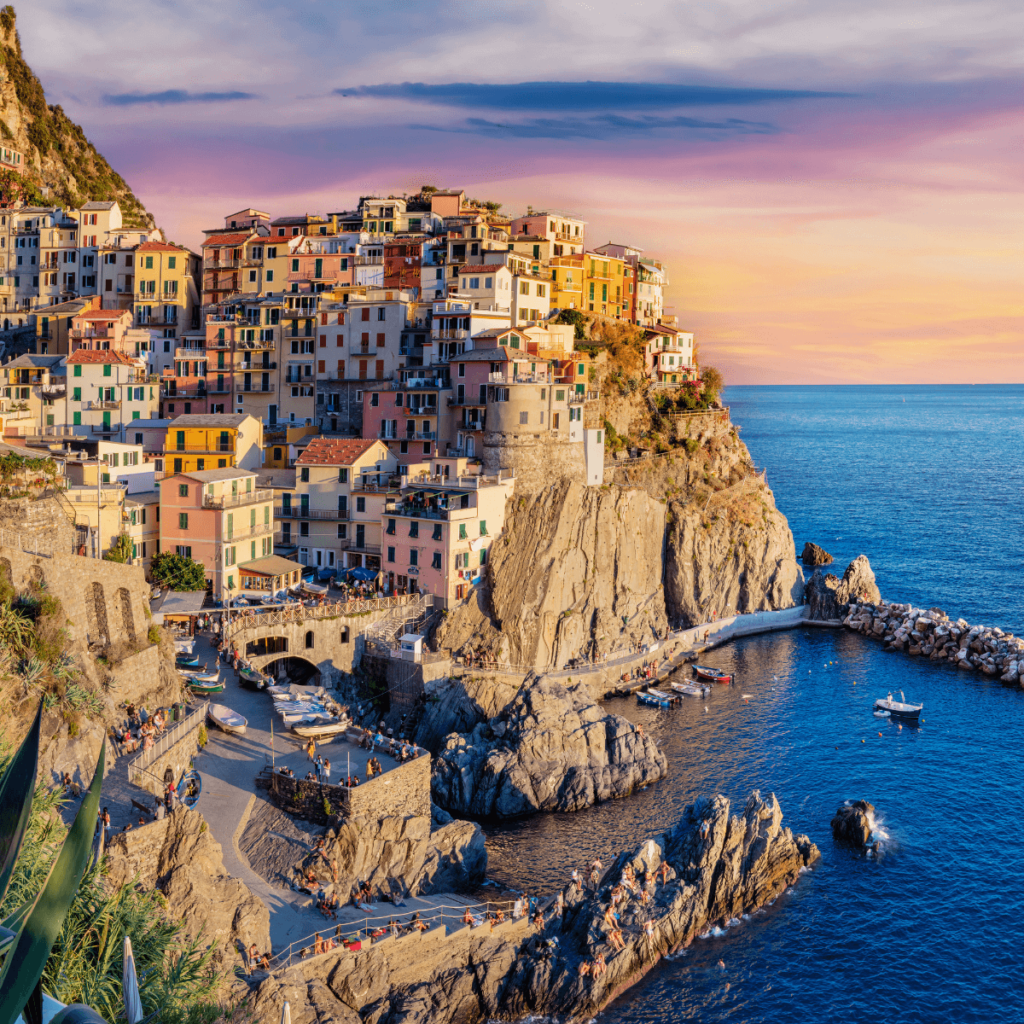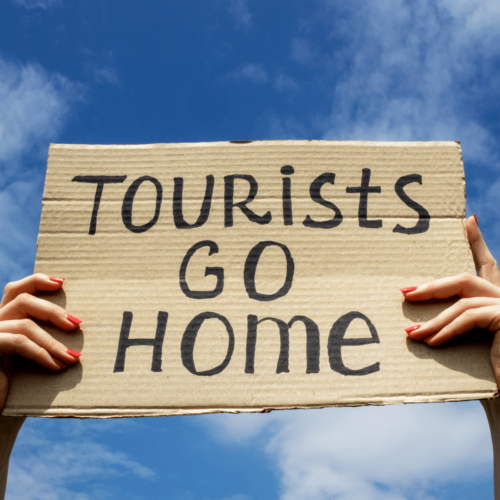In a world where tourism has become a dominant force, its excesses no longer go unnoticed. For almost two decades, the tourism landscape has been marked by the emergence of an alarming phenomenon: overtourism. Amplified by “revenge travellers” and encouraged by excessive commercialisation of sites, this scourge raises crucial questions. Has tourism, once a source of cultural enrichment and discovery, become an agent of destruction, damaging both sites and local residents? What’s more, has tourism gone to war with itself and with nature?
In this article, we will first look at the virtues of tourism, and then consider the urgent need to regulate tourist flows through the prism of Destination Yield. By exploring these dimensions, we seek to understand how tourism aspirations can be reconciled with the preservation of sites and the well-being of local communities.
On the agenda:
1. Tourism goes to war
2. The benefits of tourism
3. Flow regulation and Destination Yield
Tourism goes to war
If the subject is causing a stir, it’s not just because of the sometimes disastrous experiences that the tourists themselves have had. In fact, they are both victims and perpetrators in this affair. Nor is it because of the collateral damage that overtourism generates for itself: noise pollution, discomfort, visual pollution. The damage goes much further, affecting the ecosystem as a whole. Firstly, to the sites themselves: pollution, loss of biodiversity, the ugliness of certain infrastructures; and secondly, to the residents and their quality of life: deterioration of roads, saturation of public spaces, soaring property prices, etc.
The language used, hitherto gentle, is beginning to harden and become more incisive. The lexical field is now borrowed from that of more sensitive subjects: health, religion, war. We’re seeing sites in a state of absolute emergency. The symptoms are those of choking and suffocation. There is talk of desecration, of sacrilege. We denounce the mutilation of places, the invasion of sites. People are putting up resistance.
Has tourism, like ecology before it, gone to war? Or is it a new religion? We know all about punitive ecology, with its sins and prohibitions, its dogmas and morals, its prophets and martyrs. Tourism is beginning to fall into this category. It’s high time to reflect calmly on the situation, without fundamentalism, and considering the nobility of the subject in its two major dimensions: Man and his quest for happiness; Nature, which is both his progenitor and the object of his desire.
The benefits of tourism
Let’s go back to the origins. Tourism as we know it dates back to the very early 19th century. It referred to travellers who visited foreign countries purely for pleasure. Initially reserved for an elite, it gradually became more democratic, conveying positive messages that contributed to human fulfilment: cultural enrichment, discovery of others, contemplation of nature. An activity to recharge your batteries, both physically and mentally. The mass take-up of the sport in the 1960s, with little regard for environmental concerns (but don’t take any lessons from me, you’re always smarter afterwards), had undeniable economic benefits and helped to make the most of our collective heritage and the hidden wonders of nature.

So it’s not a question of throwing the baby out with the bathwater and giving any credence to radicals of all stripes who, like the philosopher Laurence Devillairs, want to ban tourism outright. Leisure activities and exploring the beauties of the world remain a real asset. How can we fail to marvel at natural sites of unprecedented beauty such as the Cirque de Gavarnie in the Hautes-Pyrénées or at man-made splendours such as the church of Saint-Michel on its rock at Aiguilhe, near Le Puy-en-Velay? So it’s not a question of denying Man the contemplation of nature or the meditation on the works of his predecessors. It’s about regulating flows. It’s about preserving, perpetuating and passing on.
The Cinque Terre (Italy): 5 million visitors for 4,000 inhabitants, enough to suffocate you. The inhabitants of Belle Île, like those of Bréhat, can’t take it any more. Marseille’s Calanques have become tourist factories, like Etretat. It’s a matter of urgency.
Flow regulation and Destination Yield
Let’s be clear from the outset: there is no miracle solution. The necessary regulation of flows can only be achieved through a concerted, multi-year plan involving all the links in the tourism chain.
However, in the short term, a few good levers based on the notion of capacity and quota can be put forward to begin what is now known as tourism planning. As soon as we talk about these concepts, Yield Management is not far away. This practice, which consists of managing a limited stock to find the right balance between occupancy rate and average price, is primarily designed to maximise sales. Widely used in the airline and hotel industries, it is gaining ground in new sectors every year. The aim here is to apply it at Destination level in order to regulate flows, smooth out peaks and control demand. The aim is not to adopt a pricing bludgeon, but to regulate flows.
There are two types of site:
- The first is the easiest: it involves enclosed or isolated sites (an island, a leisure park, a zoo, etc.) for which quotas need to be set. The decision takes no more time than it takes to say it. Implementation is a little trickier because, to be effective, this type of restriction needs to be controlled by counters and a booking system. In addition, many zoos and theme parks use « undated » tickets. These can account for more than half of demand. Customers or CSEs buy this type of ticket, generally valid for 1 year, and visitors turn up on site whenever they want, without warning. When a site is overwhelmed, it’s because it has no visibility over this volume of arrivals, which may be concentrated on a few dates. And when customers arrive on site after a 3-hour car or train journey, it’s a bad idea to ask them to go back to where they came from. A simple solution is to change this system and require them, like all customers, to book their slot a few days before their visit on an online platform, subject to availability of course. That is, as long as the quota has not been used up. All it takes is a few digital tools and a booking platform. It’s a matter of a few months.
The issue is more delicate for public sites and islands such as Porquerolles and Bréhat, which are also considering this type of approach. A web of businesses has accompanied this rise in tourism. Limiting the number of crossings and ferry services by decree, for example, can be done quickly, but businesses, their employees and their families must not be brought to their knees overnight by going too fast and too hard. Support is needed to reduce the number of sailings without causing human tragedy.
- The second scenario is more complex. These are open cities such as Venice, Honfleur or Barcelona. Quotas are more difficult to imagine and to manage. We’re not going to put customs officers at the entrances to towns or barricade our cities. Signage is a first lever, already deployed in Etretat on roundabouts at each entrance to the town. Signs indicating that Etretat is « saturated for two hours ». « So people go and visit somewhere else, and come back a little later », says André Baillard, Mayor of Etretat. It’s a good start.
In the longer term, the question of infrastructure arises: wanting to do the right thing, towns have built car parks and encouraged the installation of numerous hotel complexes. In doing so, they have not only absorbed the flows, they have multiplied them. And in the process, they’ve made their towns uglier. As Samuel Belaud puts it: « There is a striking paradox between the excessiveness of a tourist development and the imprint it leaves once it has been emptied of its visitors (…). The excessive artificialisation of the land can be judged by the strength of the contrast that its abandonment provokes »
The increase in supply has led to an increase in demand, in an inflationary process on all sides.
Regulating the flow of people has become a necessity in cities like Venice, where residents are suffocating. 10,000 of them leave their city every year, as the supply of short-term accommodation has pushed up property prices. A child who grew up there and could legitimately aspire to continue living there can no longer do so, as access to property has become prohibitively expensive. A strong political will is needed, which could involve a significant increase in taxation for short-term rental platforms, coupled with a drastic limit on the number of days that people are allowed to rent, in order to discourage opportunistic investors. To finally give the city back to its residents.

Venice launches its €5 entrance ticket
Venice, which has introduced a €5 entrance ticket for daily tourists visiting the old town between 8.30am and 4pm. This tax is intended to limit the massive influx of visitors and protect the city’s cultural heritage. Tourists staying for at least one night are exempt from this tax, thus encouraging more responsible and sustainable tourism.
Source : Le Point, « Venise lance son billet d’entrée à 5 euros pour limiter le tourisme de masse », 25 April 2024
Fare differentiation with Air Corsica
A relevant example of demand management is the fare policy implemented by Air Corsica, which includes a distinction between fares reserved for local residents and those intended for tourists. This measure aims to mitigate the effects of the island’s pronounced seasonal nature and mass tourism. This public policy means that residents do not have to bear the cost of strong seasonality and intense tourism. However, although the cost of the fare reserved for residents is indirectly covered by tourists to compensate, this mechanism remains opaque and smoothed out. It is not an additional tax or an additional cost.
Destination Yield, like other mechanisms, must play a part in this necessary regulation of tourist flows. Pricing is part of this, more to enhance than to monetise sites, to finance their renovation and preservation, and to adapt tomorrow’s infrastructures. But these incentives must not be a substitute for a collective awareness of our relationship with tourism, the regions and nature. For everyone’s sake. For future generations.
Keywords: Surtourism, Tourism, regulation, flow, planning, gauge, quota, Yield Management, destination, reservation,…
